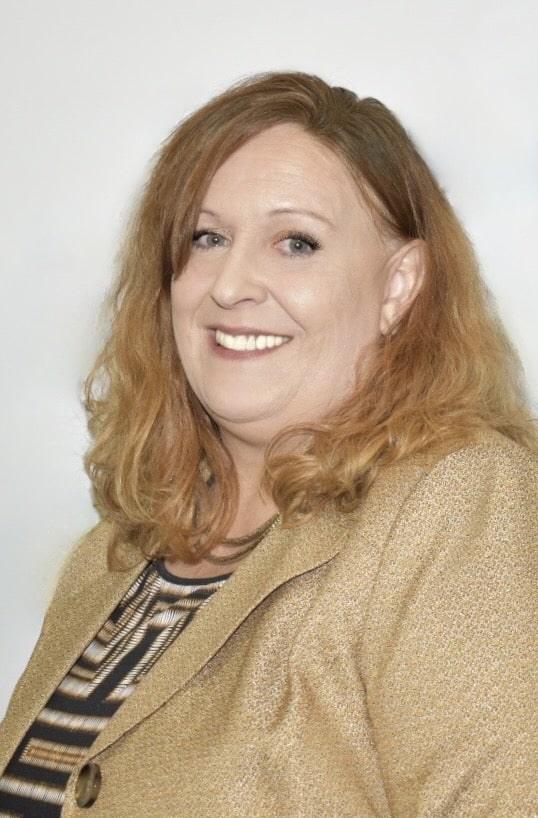Have you signed up for The Educator’s Room Daily Newsletter? Click here and support independent journalism!
It’s equally compelling as it is hilarious – this inside look at a kindergarten karate class. There’s joy in this room. Parents laughing, smiling, and taking video. Proud little ones with big dreams willing their limbs to strike out in desired directions. One of the stronger boys lets out a terrific “Huh”! His outburst seems to spur the others to greater determination. Another child who obviously needs help gets it from a more capable neighbor. Together they repeat a move six, maybe seven times. Arm up, arm down, arm across, arm in front.
I find it both precious and inspiring. Bless them! They all have such a long way to go! But when I look past the missed targets, occasional falls, and mostly uncoordinated kicking, I notice something really extraordinary. This practice session is intentional, pointed, structured – downright strategic. The young woman running this session knows what all teachers should know. Her session illustrates ten key aspects of sound instructional design. Hers is a standards-based classroom.
A Common Focus
The session begins with a communal affirmation. Standing in a group, hands clasped together, the students repeat a memorized statement of purpose. It inspires and calibrates. Like magic, the group transforms from 23 wiggle worms to 1 focused mind. They will prepare their bodies for healthful living. They will contribute to the greater good of their society, their school, and their family. They will achieve excellence. They are strong. They are capable. They will achieve their goal. This affirmation sets a high personal and collaborative expectation. The affirmation cannot be whispered or half-heartedly spoken. It must be declared with passion and spoken in earnest. Each session is a new opportunity, an important session. The spoken affirmation elevates the time together and lends a sense of urgency to the hour. The class cannot begin without acknowledging group beliefs and a shared goal.
Teacher Modeling
The instructor is here to work. She wears the uniform of the students. She will adopt the same stances and make the same moves. She will get on the floor. She will often dazzle and sometimes fail. Her students benefit from witnessing her practiced skill and experienced grace. The students watch with hungry eyes as she explains new ideas and demonstrates new moves. The concern of rigor crosses their minds. How can they possibly match that performance? But peer expectation drives them to try. The instructor speaks aloud the thoughts that contribute to the new strategy. All is revealed. As she works, the performance is demystified. It becomes accessible through her modeling, and she has earned the respect as someone each student longs to be.
Peer Assistance
All students are instructors. The instructor may call upon them to demonstrate, assist, or support one another at any time. In this risk-free environment, collective achievement is the goal. It does matter when your neighbor doesn’t get it. Practice is public, and the group performance is owned by all. The instructor knows that peer teaching benefits the teacher as well as those taught. With that in mind, she pairs students strategically. The student who almost gets it will benefit from assisting the one who already gets it just as they would benefit from changing roles. Through this peer instruction, students gain empathy and increase the responsibility they take in their own learning. They practice providing constructive criticism and learn how to hold and support an opinion.
Public Benchmarks
The well-known levels of Karate progress serve as public benchmarks. Achievement is measured and celebrated. Students must master one level before attempting the next one. In fact, levels are earned. All may begin as a white belt, but with demonstrated practice, that black belt is ultimately achievable. The colors are proudly displayed in uniform, on posters, and in display cases. Students know the level of progress they have currently demonstrated. They can articulate what skills they possess and which they have not yet demonstrated. Focused practice, then, becomes the means to progress. While the speed of progress is de-emphasized, progress toward a benchmark is noted and celebrated by all. Teacher modeling illustrates the pride one should feel for achieving even the first of goals. Negative stigma does not build. Nothing less than collective celebration is tolerated.
Frequent Celebrations
Once a student achieves a benchmark skill, that progress is instantly rewarded. Students collectively cheer and chant with clapping hands and jumping bodies. “(Clap, Clap), Truman, You Rock”! Progress is reinforced, and students share in the celebration of one another’s achievements. Individual self-esteem rises, as does the self-efficacy of all. If one can do it, they all can.
Individualized Tasks
Instruction begins with group stretching and warm-ups. The teacher then models the session’s standard expectation or skill. Yet, she groups students strategically for tiered assignments. This differentiation allows for individual task design. During this work session, the instructor floats from group to group or individual to individual to check progress or re-assign grouping, as necessary. She lingers where her attention is needed. More teacher modeling in the smaller groups allows students a second opportunity to consider the elements of a successfully completed performance. Special instructions are given, new challenges are charged, and individual performance is analyzed. When necessary, an intervention is implemented or planned to ensure a greater likelihood of success. All students receive an individualized approach to the performance task.
Appropriate Environment
The necessary work drives the classroom design. In this case, there’s ample space and portable mats to make new configurations easy to adopt. The students have the necessary manipulatives designed for safe practice. The room includes mirrors to enable observation of their own and one another’s work. Mounted televisions run muted performances worthy of modeling. Student practice charts post individual efforts for all to see. Pictures of students working are displayed throughout the room, creating a sense of community. Banners advertise upcoming performance opportunities and give rise to short-term goals as well as a sense of relevancy and authenticity. Word walls reinforce fundamental vocabulary. And most importantly, the collective purpose is boldly displayed above the mirror as a constant reminder of the group goal.
Parental Involvement
The special scheduling of a karate class often allows for a parent’s physical presence. To maximize each parent’s unique and significant influence, the instructor calls for the students to pair up with an adult during the work session. Parents, older siblings, or newly met mentors witness student practice and lend their own supportive inspiration to the work of the session. Parental involvement is additionally leveraged through homework contracts, parent meetings, and special parent performances. Parents play a collaborative role as students fulfill the expectations of out-of-class practice.
Assessment
Performance rules the day. Carefully observed in-class practice informs instruction. These informal formative assessments determine the next task or grouping. Special performance dates are chosen and posted as experiences to work toward. Many of these are outside the classroom and afford students the opportunity to perform for other objective evaluators. Through peer instruction, students refine their ability to judge and articulate aspects of peer performance. Frequent requests to describe their own progress improve self-reflection skills and metacognition.
Summary and Closing
Before dismissing, the teacher facilitates a group discussion. Seated together, the students calm themselves and focus. “What did we achieve today”? Students raise their hands to respond. As they recall group progress, the teacher gently reinforces the use of advanced terminology and precise recollection of the day. In summary, she speaks of collective progress and reminds the group of individual achievements of benchmarked skills. She congratulates students again for their individual accomplishments in a public way. She sets expectations for home practice with details of the target skill. She congratulates the full group for a great practice and encourages a final display of communal purpose. Hand in hand, the students stand to repeat their affirmation. This work is for a greater purpose. This work will benefit me as well as others. I am capable of this work.
The young karate instructor may not realize she has much to teach educators of all disciplines. But what is intuitive to her can be applied to teaching and learning in our K-12 classrooms. As teachers, we should also rally our students to a common focus, model skills so students may learn from our example, and use the value of social learning through peer support. We too should use public benchmarks of achievement and celebrate each student’s progress toward increased mastery of new skills and content. We can employ differentiation to individualize instruction and outfit our classroom environments to maximize reflection and facilitate exemplary work. With the support of parents and other family members, we can also leverage the power of each student’s home life to make relevant connections and encourage outside-of-class learning and practice. And we can also utilize a lesson structure that recognizes the value of full group summary.
Most importantly, we can look to organized disciplines like karate for their clear benchmarks of performance. Assessment in karate is ongoing. Multiple attempts are expected and failure is normalized because it is seen as temporary. The goal is individual progress. We might all start with a white belt, but we know we are working to earn the orange belt, and then the blue, and then the yellow. The reward for hard work is the honor of moving to the next level, and to the victor goes the spoils.

Dr. Barbara Bishop is a career educator with over twenty-five years of experience teaching and supporting teachers and teacher leaders. Dr. Bishop has worked at the regional and state level for the Georgia Department of Education and the West Georgia Regional Education Service Agency. She holds a doctorate in School Improvement from the University of West Georgia. Her teaching passions include instructional design, technology use, writing development, and vocabulary acquisition.
Editor’s Note: If you enjoyed this article, please become a Patreon supporter by clicking here.






